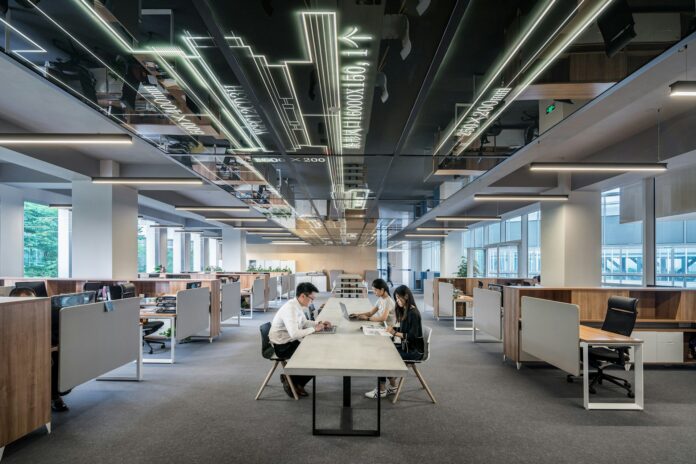In today’s fast-paced work environment, the significance of choosing the right office furniture cannot be overstated. Ergonomic office workstations are designed not just for aesthetic appeal but for the well-being of employees, fostering a healthier workspace that boosts productivity and reduces the risk of physical strain. As more people spend extended hours seated at their desks, investing in ergonomic office workstations has become essential for creating a work environment that supports long-term health and comfort.
What Makes an Ergonomic Office Workstation?
An ergonomic office workstation integrates several key elements that contribute to a healthier work environment. These elements include adjustable components, supportive structures, and user-centric designs that adapt to the needs of the individual. A well-designed ergonomic workstation promotes proper posture, reduces strain on muscles and joints, and enhances overall comfort.
Adjustable Desks and Chairs
At the core of any ergonomic workstation is the adjustable desk and chair setup. Adjustable desks, often referred to as standing desks or sit-stand desks, allow users to alternate between sitting and standing throughout the day. This flexibility helps reduce the health risks associated with prolonged sitting, such as back pain and poor circulation. Standing desks are equipped with mechanisms to adjust the height, enabling users to find the most comfortable position for their work.
Similarly, ergonomic chairs are designed with features that support proper posture. These include adjustable seat height, lumbar support, and adjustable armrests. A chair that can be customized to fit the user’s body helps prevent discomfort and strain, particularly during long working hours. The lumbar support ensures that the lower back is well-supported, reducing the likelihood of developing back pain.
Ergonomic Accessories
In addition to desks and chairs, ergonomic accessories play a crucial role in enhancing workspace comfort. Keyboard trays and mouse pads with wrist support are designed to reduce strain on the wrists and forearms. These accessories ensure that the keyboard and mouse are positioned at an optimal height, allowing for a more natural hand position and minimizing the risk of repetitive strain injuries.
Monitor stands and mounts are other important accessories that contribute to an ergonomic workspace. By adjusting the height and angle of the monitor, users can ensure that their screens are at eye level, reducing neck strain and improving overall posture. Monitor stands that are adjustable or have built-in tilt features provide added flexibility to achieve the most comfortable viewing angle.
Ergonomic Lighting
Lighting is another crucial factor in creating an ergonomic workspace. Proper lighting reduces eye strain and helps prevent headaches and fatigue. Adjustable desk lamps with variable brightness settings allow users to customize the lighting according to their needs. Additionally, incorporating natural light into the workspace can improve mood and productivity. Positioning workstations near windows or using light-filtering blinds can help maximize the benefits of natural light.
Cable Management
Effective cable management is often overlooked but is essential for maintaining an organized and clutter-free workspace. Cable management solutions, such as cable organizers and under-desk trays, help prevent cables from tangling and keep them out of the way. This not only reduces the risk of tripping but also creates a cleaner and more visually appealing work environment. Proper cable management also ensures that essential cables are easily accessible, minimizing disruptions and interruptions.
Benefits of Investing in Ergonomic Office Workstations
Investing in ergonomic office workstations yields numerous benefits that extend beyond mere comfort. Employees who work in ergonomically designed environments experience fewer musculoskeletal issues, such as back pain, neck strain, and repetitive strain injuries. This leads to fewer sick days and reduced healthcare costs, ultimately benefiting both employees and employers.
Enhanced productivity is another key advantage of ergonomic workstations. When employees are comfortable and free from pain, they can focus more on their tasks and work more efficiently. A well-designed workspace also fosters a positive work environment, contributing to higher job satisfaction and overall morale.
Furthermore, ergonomic workstations support long-term health and well-being. By promoting good posture and reducing physical strain, employees are less likely to develop chronic conditions associated with poor ergonomics. This proactive approach to workplace health can lead to a more sustainable and fulfilling work experience.
Choosing the Right Ergonomic Workstation for Your Needs
Selecting the ideal ergonomic workstation involves considering various factors, including individual preferences, workspace size, and specific job requirements. It’s important to choose furniture and accessories that can be adjusted to suit different users and work styles.
For example, a large office may benefit from adjustable desks with multiple height settings to accommodate different employees, while a smaller workspace might require compact and multifunctional furniture. Additionally, incorporating ergonomic accessories tailored to specific tasks, such as writing or computer work, can further enhance comfort and efficiency.
Ergonomic Workspace Design Tips
When designing an ergonomic workspace, it’s helpful to follow some key principles. Ensure that the desk height allows for a comfortable typing position, with elbows bent at a 90-degree angle. The chair should support the lower back, and feet should rest flat on the floor or on a footrest. The monitor should be positioned at eye level to avoid neck strain, and the keyboard and mouse should be within easy reach to minimize arm and shoulder strain.
Incorporating regular breaks and movement into the workday is also essential. Encouraging employees to stand, stretch, and move periodically can help alleviate physical stress and improve overall well-being. Some workplaces implement standing desks or adjustable desks to facilitate this practice, allowing employees to switch between sitting and standing as needed.
Conclusion
Creating a healthier workspace through ergonomic office workstations is an investment in both employee well-being and productivity. By focusing on adjustable desks, supportive chairs, ergonomic accessories, and proper lighting, organizations can create a work environment that promotes comfort, reduces physical strain, and enhances overall job satisfaction. Investing in ergonomic office furniture not only benefits employees but also contributes to a more efficient and positive workplace, making it a crucial consideration for any organization.









